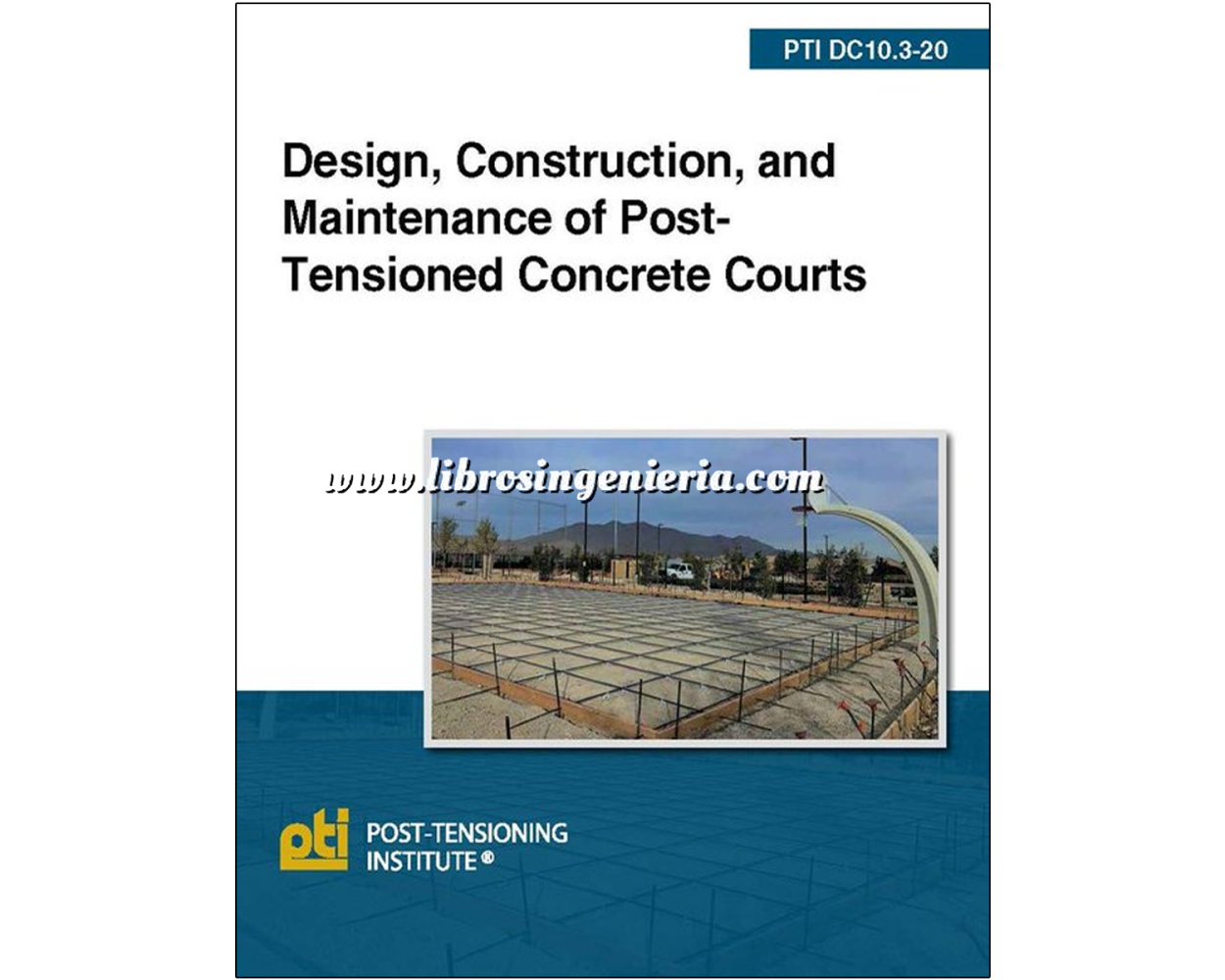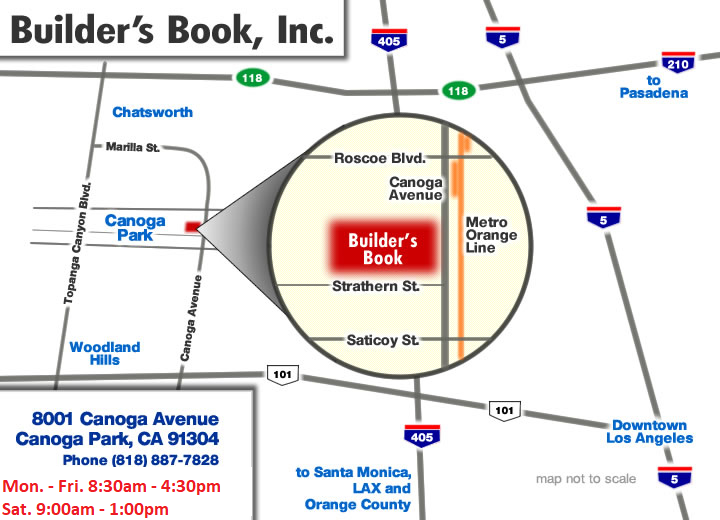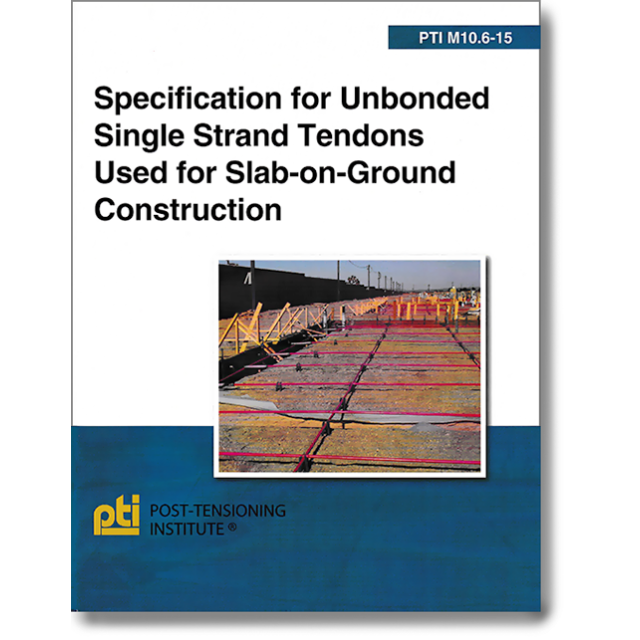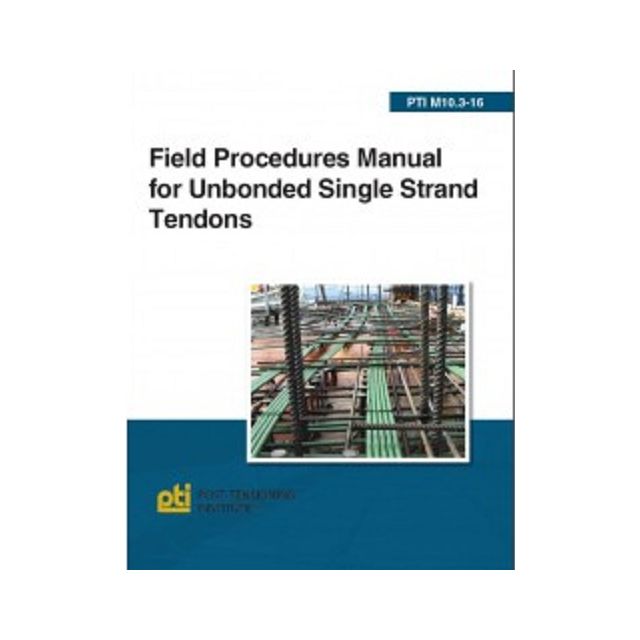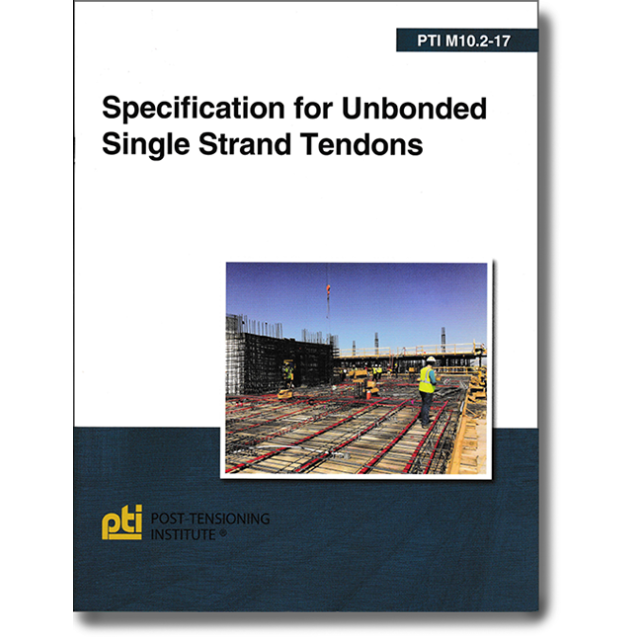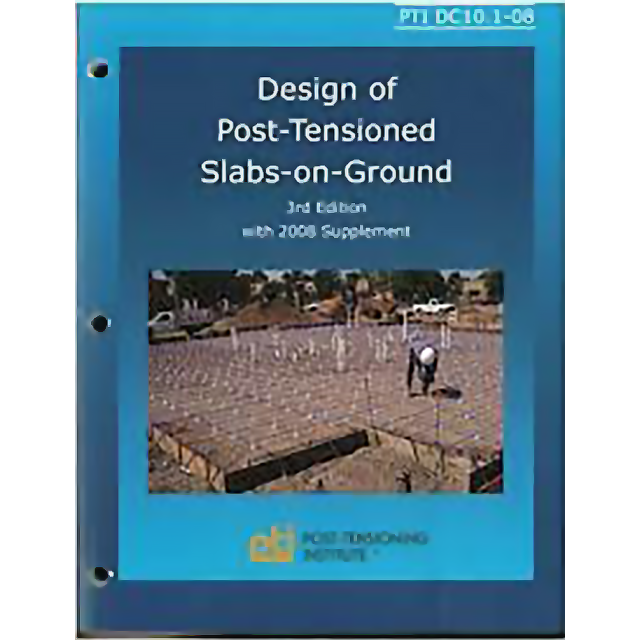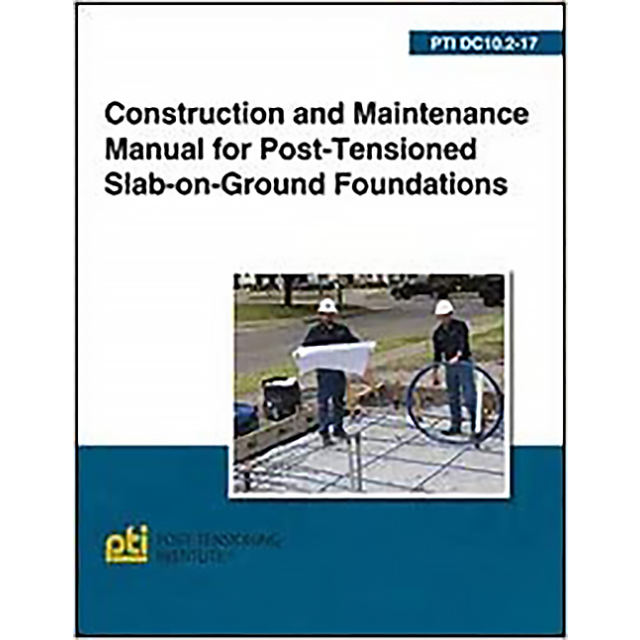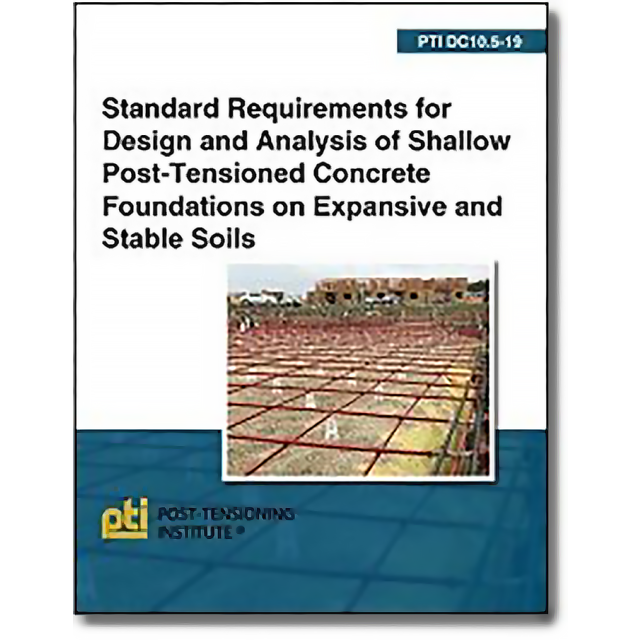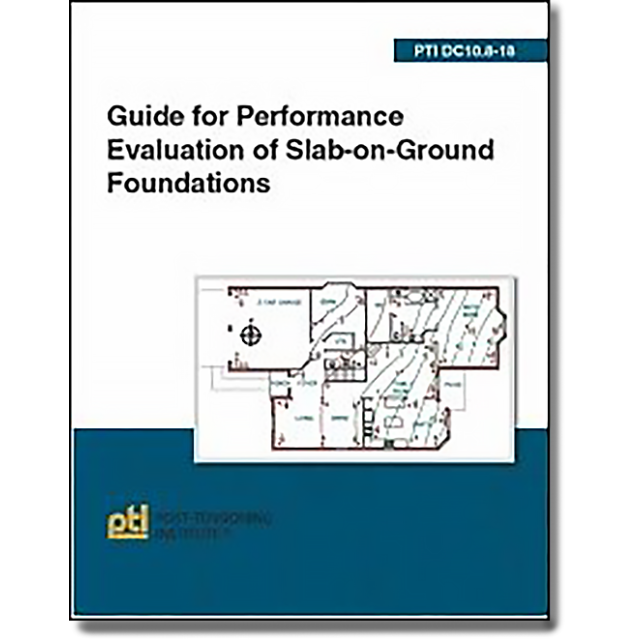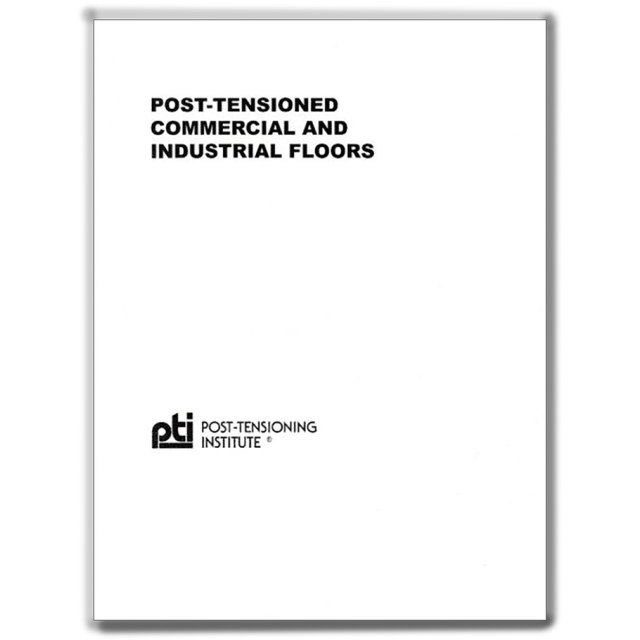DC10.3-20: Design, Construction, and Maintenance of Post-Tensioned Concrete Courts
DC10.3-20: Design, Construction, and Maintenance of Post-Tensioned Concrete Courts
This publication presents design and construction recommendations for post-tensioned concrete courts. This book is intended for designers, contractors, inspectors, and building officials. The book also covers common maintenance, construction, and detailing issues. Chapter highlights include general considerations, design requirements, detailing considerations, construction practices, sample specification provisions, elongation, final effective force, and conversion factor tables.
New items in this update include:
• Update of provisions to 2020 quality construction standards
• Enhanced details around posts and embedments
• Additional discussion of construction documents
• Acceptance, delivery, handling, and storage recommendations for PT materials
• Additional discussion of concrete materials, placement, and finishing
• Jobsite troubleshooting guidance on causes of improper elongation, handling of problems that can occur during stressing, safety considerations, handling and prevention of stressing, strand slippage, and prevention of other common issues
• Inspection items before, during, and after stressing tendons
• Added discussion of maintenance, landscaping, and adequate drainage for PT concrete courts
TABLE OF CONTENTS
1 — INTRODUCTION
1.1 — Purpose and scope
1.2 — Fabrication of tendons
1.3 — Responsibilities
1.4 — Definitions
2 — DESIGN RECOMMENDATIONS
2.1 — General
2.2 — Design requirements
2.3 — Final effective force per tendon
2.4 — Slab/subgrade friction
2.5 — Calculating required tendon spacing
2.5.1 Sample Tendon Spacing Calculation
2.6 — Designing Based on Equivalent Flexural Capacity
2.7—Detailing considerations
3 — DOCUMENT CONTROL
3.1 — General
3.2 — LDP’s slab construction documents
3.3 — Shipping documents
3.4 — Material certifications
3.5 — Stressing equipment calibration
3.6 — Stressing records
3.7 — Concrete placement records
4 — ACCEPTANCE, DELIVERY, HANDLING, AND STORAGE
4.1 — Acceptance and delivery
4.2 — Handling and storage
5 — SITE PREPARATION
5.1 — Subgrade preparation
5.2 — Slope and drainage
5.3 — Forming and construction joints
5.4 — Construction sequencing
6 — CONSTRUCTION
6.1—Field placement drawing requirements
6.2—General installation procedure
6.3—Tendon layout
7 — ENCAPSULATED SYSTEM
8 — CONCRETE
8.1 — Materials
8.2 — Placement
8.3 — Finishing
8.4 — Restraint cracks
9 — TENDON STRESSING
9.1 — General
9.2 — Preparation for stressing
9.3 — Stressing the tendons
9.4 — Causes of improper elongation
9.4.1 Equipment
9.4.2 Installation/concrete placement/stressing operations
9.4.3 Design/material discrepancies
9.5 — Problems that can occur during stressing
9.6 — Safety considerations
9.7 — Don’ts of stressing
9.8 — Inspection before, during, and after stressing tendons
10 — ELONGATION MEASUREMENTS
10.1 — General
10.2 — Preparation
10.3 — Measurement
10.4 — Recording
11 — TENDON FINISHING
11.1 — General
11.2 — Requirements for cutting of tendon tails
11.3 — Patching of stressing pockets
12 — JOBSITE TROUBLESHOOTING
12.1 — General
12.2 — Preventing the most frequent problems
12.3 — Strand slippage and/or stressing jack hung up
12.4 — Honeycombs in concrete
12.5 — Tendon and concrete blowouts
12.6 — Tendon rupture
12.7 — Tendons too short to be stressed using normal stressing procedures
12.8 — Splicing tendons
12.9 — Cracked wedges
12.10 — Lift off procedures
12.11 — Troubleshooting stressing equipment
12.11.1 — Jack is leaking
12.11.2 — Jack damages strand or will not grip strand
12.11.3 — Excessive seating loss (in excess of 3/8 in. [10 mm])
12.11.4 —Pump will not reach required gauge reading
12.11.5 — Pump is operating too slowly
12.11.6 — Gauges
13 — PROJECT MAINTENANCE
14 — LANDSCAPING
15 — SUMMARY
15.1 — General
15.2 — For More Information
16 — EXAMPLE PLANS
17 — REFERENCES
17.1 — Referenced standards
17.2 — Cited references
17.3 — Photo and figure credits
APPENDIX A — DEFINITIONS
APPENDIX B — EXAMPLE STRAND MATERIAL CERTIFICATION
APPENDIX C — EXAMPLE STRESSING JACK CALIBRATION FORM
APPENDIX D — EXAMPLE STRESSING ELONGATION RECORD FORM
APPENDIX E — TABLE OF ELONGATION VALUE
-
75 pages; 8½ x 11 in. (soft cover)
-
Published October 2020
| Price | $109.95 |
|---|---|
| Customer Service | We're Here To Help Call us anytime during our customer service hours... Monday through Friday - 8:30 am to 4:30 pm (Pacific) Order Questions: TOLL FREE, 800-273-7375 (Outside the U.S. call 818-887-7828). Our Address: 8001 Canoga Avenue Canoga Park, CA 91304 US Phone: 800-275-2665 E-mail: sales@buildersbook.com
|
| Description | DC10.3-20: Design, Construction, and Maintenance of Post-Tensioned Concrete Courts This publication presents design and construction recommendations for post-tensioned concrete courts. This book is intended for designers, contractors, inspectors, and building officials. The book also covers common maintenance, construction, and detailing issues. Chapter highlights include general considerations, design requirements, detailing considerations, construction practices, sample specification provisions, elongation, final effective force, and conversion factor tables. New items in this update include: • Update of provisions to 2020 quality construction standards • Enhanced details around posts and embedments • Additional discussion of construction documents • Acceptance, delivery, handling, and storage recommendations for PT materials • Additional discussion of concrete materials, placement, and finishing • Jobsite troubleshooting guidance on causes of improper elongation, handling of problems that can occur during stressing, safety considerations, handling and prevention of stressing, strand slippage, and prevention of other common issues • Inspection items before, during, and after stressing tendons • Added discussion of maintenance, landscaping, and adequate drainage for PT concrete courts
TABLE OF CONTENTS 1 — INTRODUCTION 1.1 — Purpose and scope 1.2 — Fabrication of tendons 1.3 — Responsibilities 1.4 — Definitions 2 — DESIGN RECOMMENDATIONS 2.1 — General 2.2 — Design requirements 2.3 — Final effective force per tendon 2.4 — Slab/subgrade friction 2.5 — Calculating required tendon spacing 2.5.1 Sample Tendon Spacing Calculation 2.6 — Designing Based on Equivalent Flexural Capacity 2.7—Detailing considerations 3 — DOCUMENT CONTROL 3.1 — General 3.2 — LDP’s slab construction documents 3.3 — Shipping documents 3.4 — Material certifications 3.5 — Stressing equipment calibration 3.6 — Stressing records 3.7 — Concrete placement records 4 — ACCEPTANCE, DELIVERY, HANDLING, AND STORAGE 4.1 — Acceptance and delivery 4.2 — Handling and storage 5 — SITE PREPARATION 5.1 — Subgrade preparation 5.2 — Slope and drainage 5.3 — Forming and construction joints 5.4 — Construction sequencing 6 — CONSTRUCTION 6.1—Field placement drawing requirements 6.2—General installation procedure 6.3—Tendon layout 7 — ENCAPSULATED SYSTEM 8 — CONCRETE 8.1 — Materials 8.2 — Placement 8.3 — Finishing 8.4 — Restraint cracks 9 — TENDON STRESSING 9.1 — General 9.2 — Preparation for stressing 9.3 — Stressing the tendons 9.4 — Causes of improper elongation 9.4.1 Equipment 9.4.2 Installation/concrete placement/stressing operations 9.4.3 Design/material discrepancies 9.5 — Problems that can occur during stressing 9.6 — Safety considerations 9.7 — Don’ts of stressing 9.8 — Inspection before, during, and after stressing tendons 10 — ELONGATION MEASUREMENTS 10.1 — General 10.2 — Preparation 10.3 — Measurement 10.4 — Recording 11 — TENDON FINISHING 11.1 — General 11.2 — Requirements for cutting of tendon tails 11.3 — Patching of stressing pockets 12 — JOBSITE TROUBLESHOOTING 12.1 — General 12.2 — Preventing the most frequent problems 12.3 — Strand slippage and/or stressing jack hung up 12.4 — Honeycombs in concrete 12.5 — Tendon and concrete blowouts 12.6 — Tendon rupture 12.7 — Tendons too short to be stressed using normal stressing procedures 12.8 — Splicing tendons 12.9 — Cracked wedges 12.10 — Lift off procedures 12.11 — Troubleshooting stressing equipment 12.11.1 — Jack is leaking 12.11.2 — Jack damages strand or will not grip strand 12.11.3 — Excessive seating loss (in excess of 3/8 in. [10 mm]) 12.11.4 —Pump will not reach required gauge reading 12.11.5 — Pump is operating too slowly 12.11.6 — Gauges 13 — PROJECT MAINTENANCE 14 — LANDSCAPING 15 — SUMMARY 15.1 — General 15.2 — For More Information 16 — EXAMPLE PLANS 17 — REFERENCES 17.1 — Referenced standards 17.2 — Cited references 17.3 — Photo and figure credits APPENDIX A — DEFINITIONS APPENDIX B — EXAMPLE STRAND MATERIAL CERTIFICATION APPENDIX C — EXAMPLE STRESSING JACK CALIBRATION FORM APPENDIX D — EXAMPLE STRESSING ELONGATION RECORD FORM APPENDIX E — TABLE OF ELONGATION VALUE
|

